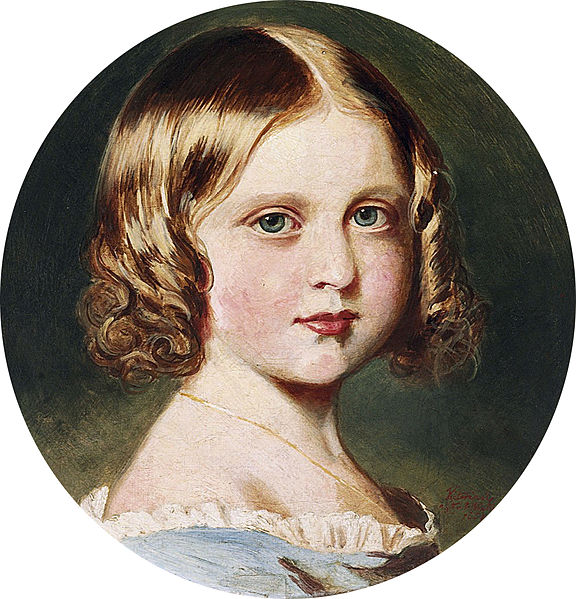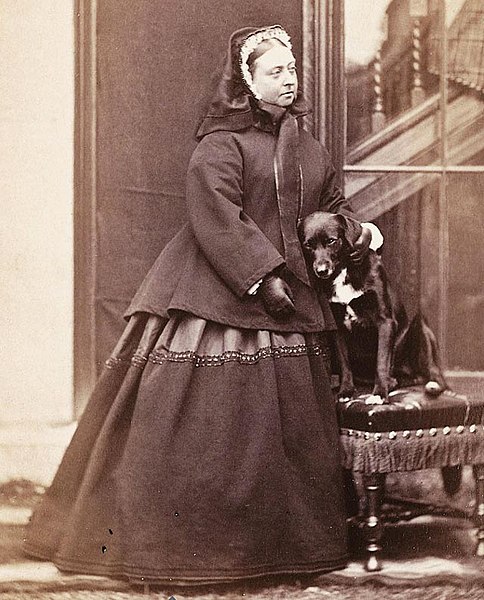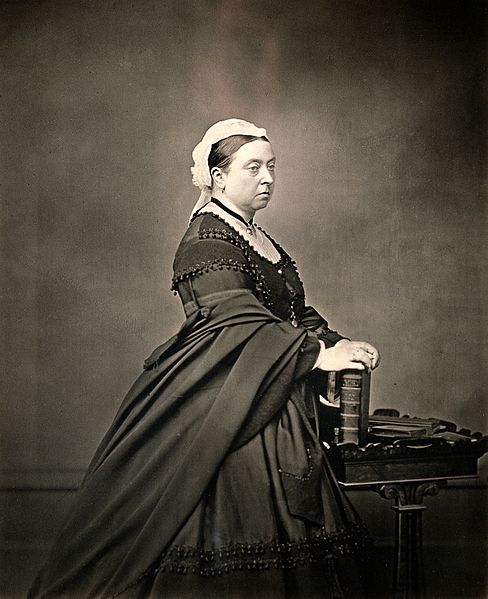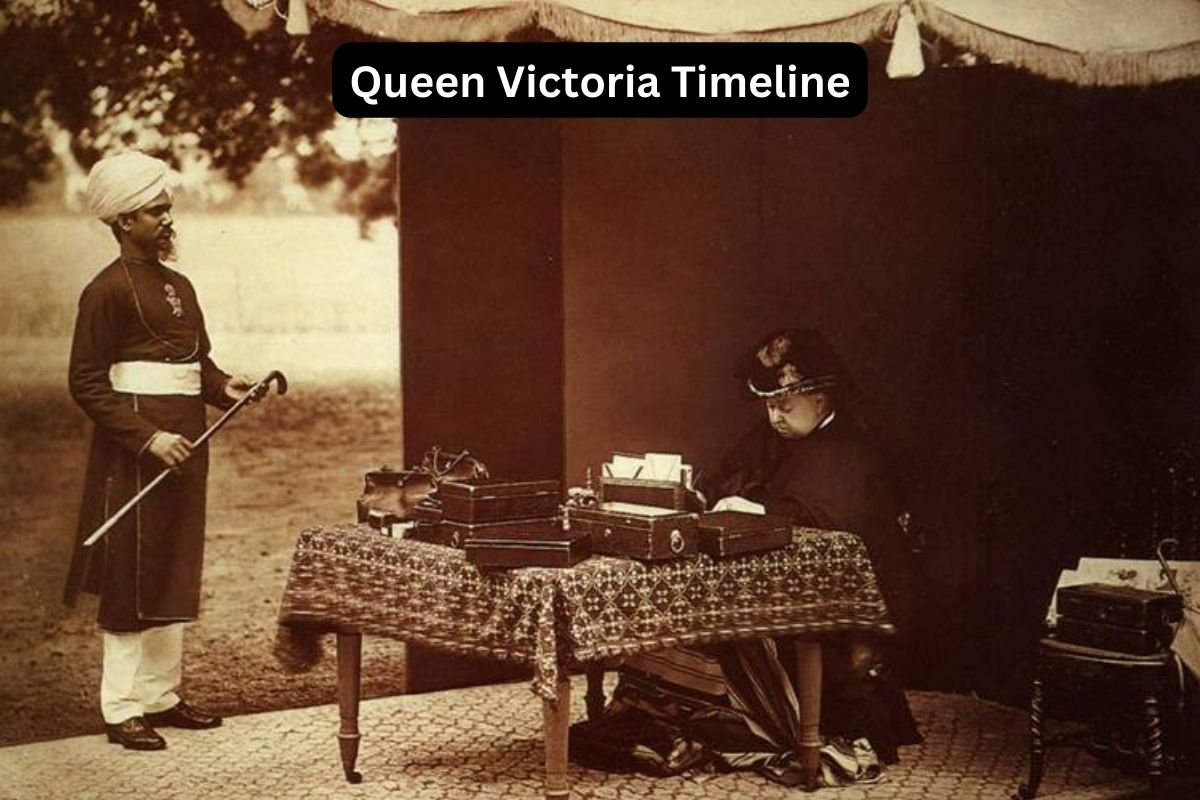Queen Victoria, born on May 24, 1819, in Kensington Palace, London, embarked on a remarkable journey that would define an era and shape the course of history.
Her reign, which began on June 20, 1837, and lasted until her passing on January 22, 1901, marked the Victorian era—a period of profound transformation, cultural richness, and unprecedented global influence.
In this article, we delve into the life of Queen Victoria, exploring key events and milestones that characterize her reign, from her ascension to the throne at a young age to her enduring legacy as one of the most iconic monarchs in British history.
| Date | Event |
|---|---|
| May 24, 1819 | Queen Victoria is born as Alexandrina Victoria in Kensington Palace, London. |
| June 20, 1837 | Victoria becomes Queen of the United Kingdom at the age of 18 following the death of her uncle, King William IV. |
| February 10, 1840 | Queen Victoria marries her cousin, Prince Albert of Saxe-Coburg and Gotha, in a royal wedding ceremony. |
| November 21, 1840 | The couple’s first child, Princess Victoria, is born. |
| 1842 | The British royal family adopts the tradition of decorating a Christmas tree, popularizing the custom in England. |
| 1844 | Queen Victoria gives birth to her second son, Prince Alfred. |
| 1845 | Queen Victoria gives birth to her third child, Princess Alice. |
| 1853 | Queen Victoria gives birth to her fourth child, Prince Arthur. |
| 1857 | The Indian Rebellion of 1857, also known as the Sepoy Mutiny, occurs during Victoria’s reign. |
| 1858 | The British government formally takes control of India from the British East India Company, making it a crown colony. |
| 1861 | Prince Albert, Queen Victoria’s husband, dies of typhoid fever, plunging the Queen into deep mourning. |
| 1867 | The British North America Act is passed, creating the Dominion of Canada and giving it self-governing status within the British Empire. |
| 1876 | Queen Victoria is proclaimed Empress of India. |
| 1887 | Victoria celebrates her Golden Jubilee, marking 50 years of her reign. |
| 1897 | Queen Victoria celebrates her Diamond Jubilee, marking 60 years on the throne. |
| January 22, 1901 | Queen Victoria passes away at the age of 81 after 63 years as the Queen of the United Kingdom. Her son, Albert Edward, succeeds her as King Edward VII. |
Timeline of Queen Victoria
May 24, 1819: Queen Victoria is born as Alexandrina Victoria in Kensington Palace, London
Queen Victoria was born as Alexandrina Victoria to Prince Edward, Duke of Kent, and Princess Victoria of Saxe-Coburg-Saalfeld. Her full name at birth was Alexandrina Victoria, and she was the granddaughter of King George III.
Also Read: Facts About Queen Victoria
Her father, the Duke of Kent, was the fourth son of King George III, which made her a legitimate heir to the British throne.
Victoria’s birth marked the beginning of a new era in British history, as she would eventually become one of the longest-reigning monarchs in British history.

June 20, 1837: Victoria becomes Queen of the United Kingdom at the age of 18 following the death of her uncle, King William IV
Queen Victoria ascended to the throne after the death of her uncle, King William IV, in 1837. She was only 18 years old at the time, and her accession marked the start of the Victorian era, which would become synonymous with her reign.
Her reign brought significant changes to British society and politics, as well as the expansion of the British Empire during the 19th century.
February 10, 1840: Queen Victoria marries her cousin, Prince Albert of Saxe-Coburg and Gotha, in a royal wedding ceremony
Queen Victoria married her first cousin, Prince Albert of Saxe-Coburg and Gotha, in a grand ceremony at St. James’s Palace in London. The marriage was a love match, and it became one of the most famous and enduring royal marriages in history.
Also Read: Accomplishments of Queen Victoria
Prince Albert played a crucial role in Queen Victoria’s reign, serving as her trusted advisor and supporting various philanthropic and cultural initiatives, including the Great Exhibition of 1851.
November 21, 1840: The couple’s first child, Princess Victoria, is born
After their marriage, Queen Victoria and Prince Albert had their first child, Princess Victoria. She was born on November 21, 1840, and was often called “Vicky” within the family. Her birth was a significant event, as she was the first of the couple’s nine children.
Princess Victoria’s birth marked the beginning of a family that would become interconnected with various European royal houses through strategic marriages.
1842: The British royal family adopts the tradition of decorating a Christmas tree, popularizing the custom in England
In 1841, Prince Albert introduced the Christmas tree to the British royal family. He brought this German tradition to England, setting up a decorated Christmas tree at Windsor Castle.
The custom quickly gained popularity and became a cherished Christmas tradition in the United Kingdom and eventually in many other parts of the world. The image of Queen Victoria and her family gathered around a decorated Christmas tree became iconic.

1844: Queen Victoria gives birth to her second son, Prince Alfred
Queen Victoria and Prince Albert’s second child, Prince Alfred, was born on August 6, 1844. He was named Alfred Ernest Albert and was given the title of Duke of Edinburgh.
Like his older sister and younger siblings, Prince Alfred played a role in European royal politics through strategic marriages, including his marriage to Grand Duchess Maria Alexandrovna of Russia.
1845: Queen Victoria gives birth to her third child, Princess Alice
On April 25, 1845, Queen Victoria and Prince Albert welcomed their third child, Princess Alice Maud Mary, into the world. Alice was known for her intelligence and strong sense of duty.
She would later marry Louis IV, Grand Duke of Hesse, and became known for her philanthropic work, particularly in the field of nursing. Her daughter, Princess Alice of Battenberg, would become the mother of Prince Philip, Duke of Edinburgh, the consort of Queen Elizabeth II.
1853: Queen Victoria gives birth to her fourth child, Prince Arthur
Prince Arthur William Patrick Albert, the third son and fourth child of Queen Victoria and Prince Albert, was born on May 1, 1850. He was given the title Duke of Connaught and Strathearn.
Prince Arthur had a military career and served in various regiments, including the British Army. He held the position of Governor-General of Canada from 1911 to 1916.
1857: The Indian Rebellion of 1857, also known as the Sepoy Mutiny, occurs during Victoria’s reign
The Indian Rebellion of 1857, often referred to as the Sepoy Mutiny, was a major uprising against British rule in India. It began in the town of Meerut on May 10, 1857, and quickly spread to other parts of India.
The rebellion posed a significant challenge to British authority in India and had far-reaching consequences. After the suppression of the rebellion, the British Crown formally took control of India in 1858, ending the rule of the British East India Company and marking the beginning of direct British rule.

1858: The British government formally takes control of India from the British East India Company, making it a crown colony
In 1858, following the Indian Rebellion of 1857, the British government passed the Government of India Act, which transferred the control of India from the British East India Company to the British Crown.
This marked the beginning of the British Raj, a period of direct British rule in India that would last until India gained independence in 1947. Queen Victoria was proclaimed Empress of India in 1876, reflecting the expanded scope of her reign.
1861: Prince Albert, Queen Victoria’s husband, dies of typhoid fever, plunging the Queen into deep mourning
On December 14, 1861, Prince Albert, Queen Victoria’s beloved husband and consort, passed away at the age of 42. His death was a profound loss for Queen Victoria, and she was devastated by his untimely demise.
Queen Victoria entered a state of deep mourning that lasted for many years, during which she wore black and withdrew from public life to a significant extent. This period of mourning had a substantial impact on the public perception of the monarchy.
1867: The British North America Act is passed, creating the Dominion of Canada and giving it self-governing status within the British Empire
The British North America Act, also known as the BNA Act, was passed by the British Parliament on March 29, 1867. This legislation marked a significant development in the history of Canada.
The act created the Dominion of Canada by uniting the colonies of Canada (now Ontario and Quebec), New Brunswick, and Nova Scotia into a single federal entity. It also provided Canada with a self-governing status within the British Empire, with its own federal and provincial governments.
1876: Queen Victoria is proclaimed Empress of India
On May 1, 1876, Queen Victoria was proclaimed Empress of India in a grand ceremony held in Delhi, marking her formal title as Empress of India. This proclamation recognized the British Crown’s authority over the Indian subcontinent.
The title of Empress of India was introduced to reflect the significance of India within the British Empire and Queen Victoria’s role as its sovereign. Her reign had seen the expansion of British influence in India, and this title underscored the political and symbolic importance of India to the British Empire.

1887: Victoria celebrates her Golden Jubilee, marking 50 years of her reign
Queen Victoria’s Golden Jubilee in 1887 marked the 50th anniversary of her accession to the throne. It was a significant milestone in her reign and was celebrated with great pomp and ceremony throughout the United Kingdom and the British Empire.
The Golden Jubilee celebrations included a grand procession in London, attended by numerous dignitaries and heads of state from around the world. It was a momentous occasion that showcased the enduring popularity of Queen Victoria.
1897: Queen Victoria celebrates her Diamond Jubilee, marking 60 years on the throne
In 1897, Queen Victoria celebrated her Diamond Jubilee, marking an incredible 60 years as the Queen of the United Kingdom. This was a remarkable achievement and made her the longest-reigning British monarch at the time.
The Diamond Jubilee celebrations were even more elaborate and widespread than those of the Golden Jubilee. Queen Victoria received congratulatory messages from across the globe, and special events were held in her honor throughout the British Empire.
January 22, 1901: Queen Victoria passes away at the age of 81 after 63 years as the Queen of the United Kingdom. Her son, Albert Edward, succeeds her as King Edward VII
Queen Victoria passed away on January 22, 1901, at the age of 81 at Osborne House on the Isle of Wight. Her death marked the end of an era in British history, as she had reigned for 63 years, making her the longest-reigning British monarch until surpassed by Queen Elizabeth II in 2015.
Following Queen Victoria’s death, her eldest son, Albert Edward, succeeded her as King Edward VII. His reign marked the beginning of the Edwardian era.
